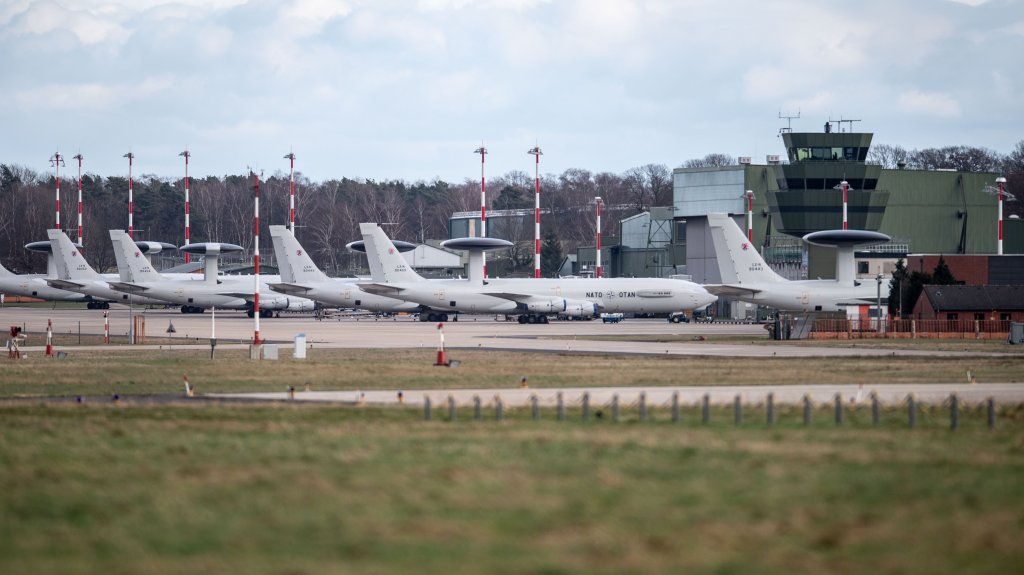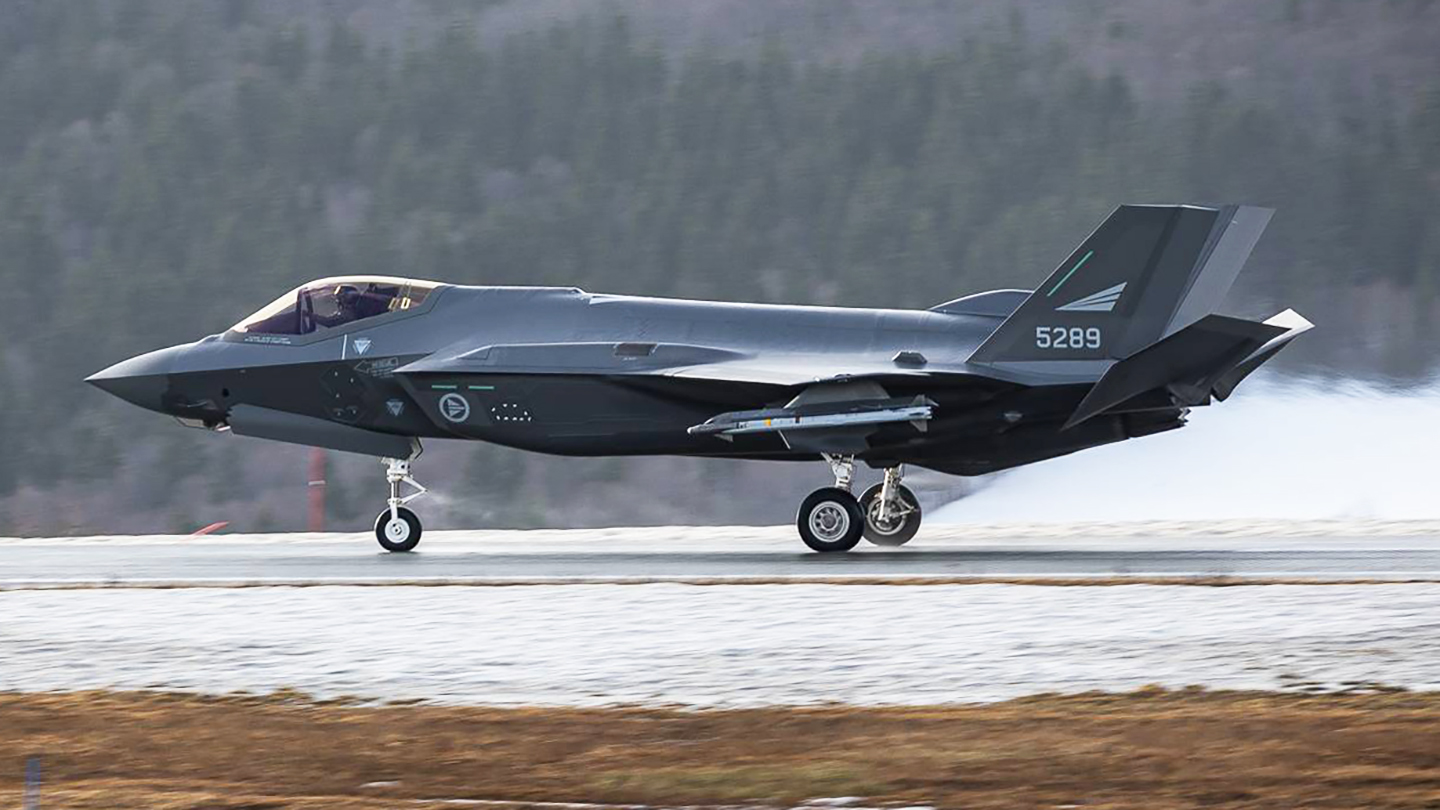Norway has revealed that one of its most strategic air bases has been the target of sabotage. The announcement comes as other European NATO air bases — namely in Germany — report incidents, one of which remains unexplained, as well as troubling drone activity over critical infrastructure. These incidents come amid increasing warnings about nefarious Russian activity on the continent, part of an apparent wave of ‘hybrid warfare’ as the conflict in Ukraine further stokes East-West tensions.
Reports emerged today from The Barents Observer that a critical communications cable associated with Evenes Air Station, in northern Norway, had been severed. The incident occurred in April and was reported to the police, but has only now been announced, as state prosecutors investigate what happened.
The precise function of the cable has not been disclosed, but reports describe it as being “part of the air base’s critical infrastructure,” and that it was cut outside the airfield’s perimeter. The Norwegian Police have confirmed that it was severed in a deliberate action but that, so far, no one has been charged, and no suspects have been identified at this point.
Located north of the Arctic Circle, Evenes Air Station is critical to the defense of Norway and NATO’s Northern Front. It is one of two Royal Norwegian Air Force (RNoAF) bases hosting permanent F-35A stealth fighter units and it is also receiving the service’s fleet of P-8A maritime patrol aircraft.
In addition to its flying squadrons, Evenes is home to other important military units, including ones responsible for air defense (with NASAMS surface-to-air missiles), and elements of the Norwegian Cyber Defense Force and the Norwegian Armed Forces Logistics Organization.

Norway has seen other suspicious incidents in the past, notably the cutting of a vital undersea cable connecting Svalbard to mainland Norway in 2022. Before then, in 2018, the Norwegian Intelligence Service (NIS) disclosed three separate instances where Russian aircraft had flown mock attack profiles against a secretive radar station in the northern part of the country. The year before that, the NIS blamed Russian jamming for disruptions in cell phone and GPS service in the region, though it said this was a byproduct of an exercise and not a deliberate attack.
Meanwhile, in Germany this month, authorities were faced with two possible acts of sabotage at different air bases, one of which later proved to be a false alarm.
First, Wahn Barracks, the military section of Cologne Bonn Airport, in the west of the country, was sealed off on August 14 amid concerns about potential sabotage against the local water supply.
The alarm was raised after a guard at the base found a hole in a fence near the base’s water processing plant. Authorities told personnel at the base — 4,300 soldiers and 1,200 civilian employees — not to drink the tap water. A search was made of the base, but no trespassers were found.

“The water supply was interrupted as the drinking-water system showed unusual values,” the German Armed Forces’ Territorial Command said in a press release.
After an investigation, the German Ministry of Defense stated that there was no evidence that this had taken place, with test results showing that the water was not contaminated.
Wahn Barracks serves the military part of Cologne’s airport, which is home to the German Armed Forces’ Executive Transport Wing, operating VIP aircraft as well as the German Air Force’s refueling tankers and medical evacuation transports.

Today, NATO announced that it had lowered the security level at Geilenkirchen Air Base, also in the west of the country, after the facility’s state of alert had been raised overnight. This was in response to what the German Ministry of Defense described as “intelligence information indicating a potential threat.”
“All non-mission essential staff have been sent home as a precautionary measure,” the base said in a statement on the social media platform X. “The safety of our staff is our top priority. Operations continue as planned.”
Roughly, 24 hours later, in another post on X, NATO said: “The security level at NATO air base Geilenkirchen has returned to Bravo. The temporary rise to Charlie was a precautionary measure to minimize potential risk to our organization and personnel. All scheduled operations are proceeding as planned.”
NATO’s security level Charlie implies that “an incident has occurred, or intelligence has been received indicating that some form of terrorist action against NATO organizations or personnel is highly likely.”
While NATO hasn’t said what exactly the nature of the threat was, it was reportedly sufficient to force the resident NATO E-3 Sentry Airborne Warning and Control System (AWACS) fleet to function “with minimal staffing as a precautionary measure while operations continued as planned.”
Geilenkirchen is the main operating base for NATO’s AWACS fleet, a multinational force that plays a hugely important role in the alliance’s air operations, providing airborne early warning, command and control, and battle management capability in Europe and elsewhere.

The same installation had also seen the security level raised last week, in response to reports of an attempted trespassing incident at the base together with the possible sabotage of the water supply at Wahn Barracks. A full sweep was made of the premises at Geilenkirchen; again, no trespassers were found.
However, there is certainly a precedent for planned attacks directed against military bases in Germany, specifically.
In April, two German-Russian nationals were arrested in Germany on suspicion of plotting sabotage attacks, including on U.S. military facilities in the country. One of those individuals was accused of making plans to carry out bomb and arson attacks on military facilities and had allegedly taken photos and videos of military transports and equipment.
The supposed targets of the pair included the U.S. Army’s Grafenwoehr base in the southern state of Bavaria, where Ukrainian soldiers are trained to use U.S.-supplied M1 Abrams tanks.

Elsewhere in Germany, there have been reports of recent unexplained drone activity in the north of the country, including over an industrial park in Brunsbüttel, northwest of Hamburg, home to a major floating liquid natural gas (LNG) terminal.
Prosecutors in Germany have said they expect the drone flights are related to “espionage activity for sabotage purposes” and also cite “repeated” drone flights over “critical infrastructure.”
Drone flights over the area have been observed since August 8, with reports that the craft have been hard to track due to their high speeds —reportedly around 60 miles per hour — and their approach from the sea. Critical infrastructure and very high security military bases in the U.S. are experiencing a growing number similarly mysterious intrusions, a troubling reality The War Zone has led reporting on.
At this point, there is nothing to connect the sabotage of a cable at Evenes and the so-far mysterious incident that led to an alert at Geilenkirchen to the Kremlin, let alone the reported drone activity in northern Germany.
However, this all comes as NATO increasingly warns of the risk of an expanding campaign of sabotage, including cyberattacks, across Europe, a new wave of hybrid warfare masterminded by Russia.
In June, NATO Secretary General Jens Stoltenberg described what the alliance identified as “a surge of sabotage, cyber-attacks, instrumentalized migration, and other hostile actions by Russia.”
Stoltenberg further pointed to the need for “increased intelligence exchange, enhanced protection of critical infrastructure, including undersea and in cyberspace, and further restrictions on Russian intelligence operatives,” while at the same time stating that Russia’s campaign would not deter NATO from supporting Ukraine.

“Virtually every ally was seized with this intensification of Russia’s hybrid attacks,” U.S. Secretary of State Antony Blinken said after a meeting of NATO foreign ministers in Prague last month. “We know what they’re up to, and we will respond both individually and collectively as necessary.”
In the last few months, there has been a spike in reported incidents of this kind, suspected to be connected to Russia, if not orchestrated directly by Moscow. As well as Germany and Norway, these incidents have been reported in other NATO countries including the Czech Republic, Poland, and the United Kingdom.
In July, reported intelligence concerns about possible sabotage attacks by Russian-backed actors saw U.S. military bases across Europe placed on a heightened state of alert, “for the first time in a decade,” according to CNN.
For Russia, a campaign of this kind could be attractive for several reasons.
On the one hand, as Moscow becomes increasingly desperate to try and stem support among NATO countries for arming Ukraine — with weapons that are now, albeit to a limited extent, being used on its own territory — it is driven to ever bolder efforts to try and undermine this.

Hybrid warfare offers a relatively reduced-risk and low-cost solution and, provided it achieves the desired results in terms of disruption and fear, has the potential to undermine support for Ukraine among the wider European populace.
Using proxies, including among the Russian diaspora in Europe, as well as criminal gangs, provides a layer of plausible deniability, making it especially hard to pin any given act of sabotage on Moscow directly.
Again, at this stage, Russia’s role in the suspected sabotage incidents in Germany and Norway remains unconfirmed, but there’s no doubt that NATO is increasingly alert to the prospect of these kinds of attacks, orchestrated by Moscow, becoming much more common in Europe.
Contact the author: thomas@thewarzone.com
